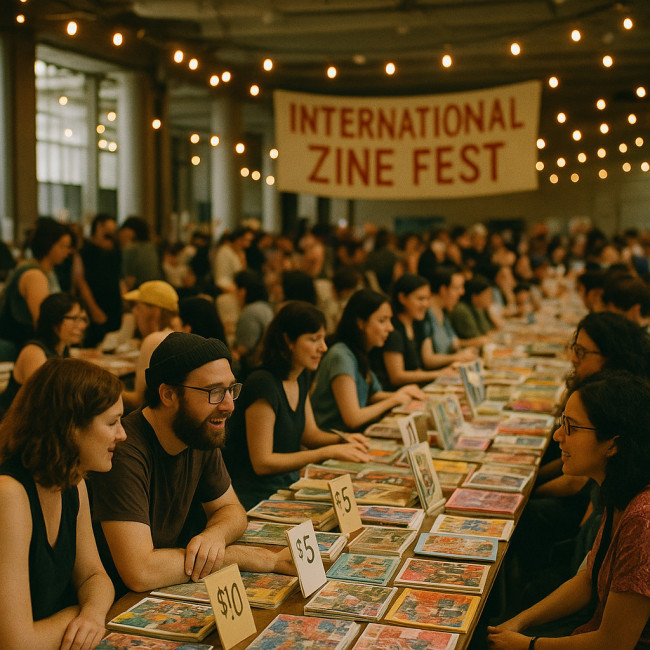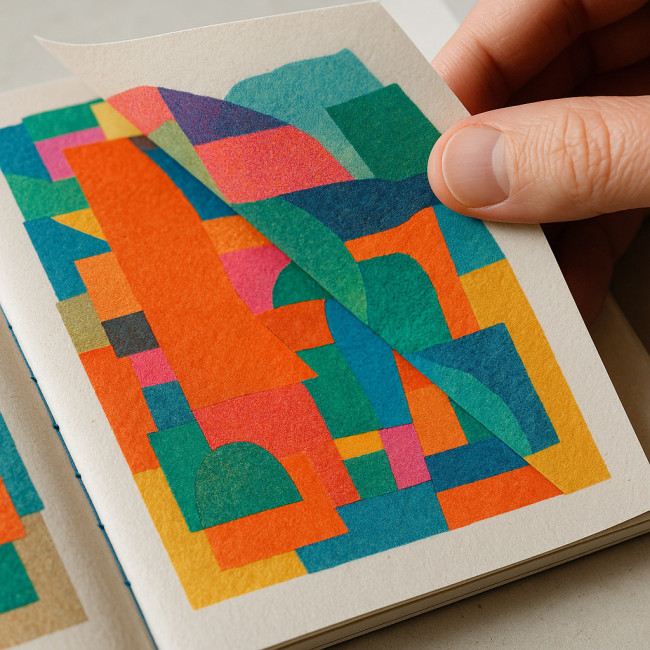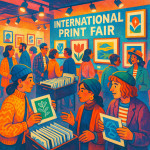Collagist zine festivals: how to curate collective issues that sell out
Thinking of bringing your cut-paper art to a zine fest? Follow this step-by-step roadmap to curate irresistible collective issues, move every copy off the table, and turn first-time readers into loyal collectors.
Understand the zine-festival landscape

Zine fests have exploded from niche meet-ups to international marketplaces that attract thousands of buyers hungry for limited editions. In most halls, collective issues—one zine featuring several artists—outsell solo booklets 3:1 because they pack variety, cross-pollinate fan bases and lower printing costs per contributor. Curate them strategically and you will ride that demand curve.
Why collective issues sell faster
- Diversity on every page keeps browsers flipping longer.
- Shared promotion means each artist broadcasts the launch to their own audience.
- Perceived value is higher: more voices for roughly the same price as a solo zine.
- Cost efficiency: pooled money funds better paper stocks and finishes.
Step 1 – Define a theme that magnetises buyers
Scan festival line-ups six months ahead. Note the season's trending topics: climate anxiety, analogue nostalgia, speculative futures. Pick a theme that lets contributors riff while staying coherent. A tight concept sparks impulse buys and simplifies your marketing slogans.
Craft micro-narratives
Ask each artist for a 50-word statement explaining how their collage interprets the theme. Print these beside the artwork so readers feel they are collecting stories, not only images. This narrative layer boosts price tolerance by up to 20 % in zine-fest surveys.
Step 2 – Recruit contributors the smart way
Set a contributor cap that fits page count and budget—usually 10 to 15 artists for a 48-page issue. Publish an open brief on your social channels and specialised platforms such as event-ready image-designer boards. Outline theme, deadlines, and revenue split to filter serious applicants.
Diversity criteria that lift sales
- Technique mix : analogue, digital, and hybrid pieces side-by-side widen appeal.
- Geographic spread brings new aesthetics and expands your promotional reach.
- Experience range pairs emerging voices with established names, adding discovery value.
Need more guidance on brief writing? Check our deep dive on inspiring collage project briefs.
Step 3 – Design for tactile desire

Bestselling zines engage fingers as much as eyes. Allocate 30 % of your budget to paper, binding and embellishments. A 170 g uncoated stock with a Risograph overlay can double booth dwell time compared with standard copier paper. The moment attendees feel unexpected heft and texture, they instinctively slow down, allowing you to pitch upgrades like French flaps or foil-stamped covers. Sensory design is your silent salesperson, converting casual flippers into eager buyers who show off your zine to friends, amplifying word-of-mouth throughout the hall.
Paper, binding & special finishes
| Option | Sensory impact | Cost per 100 copies | Upsell potential |
|---|---|---|---|
| Uncoated 120 g + Staple | Entry level, light flip | €70 | Low |
| 170 g Recycled + Thread sew | Thick, earthy feel | €120 | Medium |
| Riso overlay + French flap | Bold colours, premium fold | €180 | High |
| Foil stamp cover | Shiny focal point | €220 | Very high |
Want a full analogue-vs-digital production checklist? Explore analogue vs. digital collage hand-offs.
Step 4 – Price and bundle to move copies
Research average fest pricing: €8–€12 for a 40-page zine. Then create three tiers:
- Solo zine (€10) – main product.
- Zine + sticker sheet (€14) – 40 % of buyers upgrade on the spot.
- Collector pack (€25) – signed copy, mini print and behind-the-scenes PDF.
Clearly display bundles on a vertical sign; festival foot traffic rarely stops for lengthy explanations.
Transparent revenue split
Most collectives split net profit 60/40: 60 % to the organiser (to cover booth, print and promo), 40 % divided equally among contributors. Outline this in writing on day one to avoid friction.
Step 5 – Promote before and during the festival
Momentum starts at least four weeks pre-fest.
- Create a shared content calendar—each artist posts teaser spreads twice a week.
- Offer pre-orders online and mark them “pick-up only” to guarantee booth visits.
- Schedule live collage demos every two hours during the event; crowds attract crowds.
- Use QR codes on table runners leading to a real-time stock counter—scarcity nudges sales.
Cross-promote beyond the hall
If the venue allows, hide free mini-zines in nearby cafés with a map to your stall. At Chicago Zine Fest 2023, this tactic boosted walk-in traffic by 18 % according to organiser reports.
Post-festival tactics to extend the sales runway
You sold out? Congrats. Now monetise residual demand:
- Second print run : open a 10-day online preorder window. Limit the edition to keep exclusivity.
- Gallery pitch : bundle framed spreads and approach local art shops. Learn framing-friendly composition tricks in our brand-collaboration guide.
- Digital edition : create a pay-what-you-want PDF and invite tips.
- Newsletter funnel : capture buyer emails at checkout for future launches. A simple checkbox raised repeat sales by 22 % in an internal survey of 500 zine customers.
Quick self-assessment quiz
FAQ
- Do I need ISBNs for zines sold at festivals?
- No. Most zine fests treat zines as art prints, not books. However, adding an ISBN helps if you plan to stock in bookstores later.
- How many copies should I print for my first appearance?
- Print 1.5 × your social media preorder count, with a floor of 100 copies. This covers impulse traffic without risky overstock.
- Can I accept card payments without a business account?
- Yes. Portable readers like SumUp or Square offer instant onboarding, though fees hover around 1.75 % per swipe.
- What's the best way to display zines on a crowded table?
- Use vertical acrylic stands. They triple cover visibility compared with flat stacks and prevent dog-eared corners.
- How do I keep contributors engaged after the festival?
- Create a private group chat, share sales data transparently, and invite pitches for the next issue within two weeks while excitement is fresh.
Wrap-up & next steps
You now have a proven blueprint to dominate collagist zine festivals. Define a magnetic theme, curate a balanced roster, invest in tactile finishes and orchestrate promotions like a pro. Ready to turn ideas into pages? Download our free production timeline template and join hundreds of makers who sell out at every event.
Action time : Block one hour this week to draft your call-for-artists and book that festival table before slots vanish.











